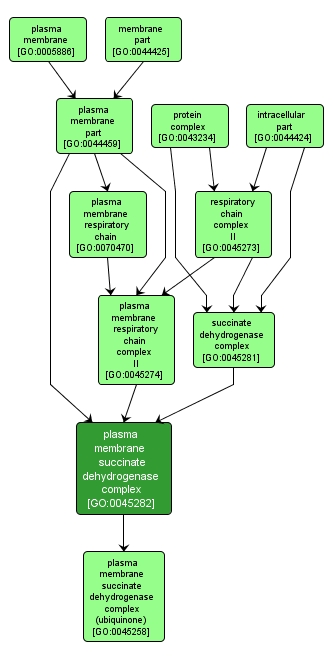| Desc: |
A multimeric complex which consists of flavoprotein (subunit A ; InterPro:IPR003952), iron-sulfur protein (subunit B) and membrane-bound cytochrome b560 (subunit C; InterPro:IPR000701). In some Archaea, the membrane-bound subunits (C or C and D) do not necessarily contain heme. Membrane-bound subunits can bind/react with quinones. Examples of this component are found in Bacterial species. |














